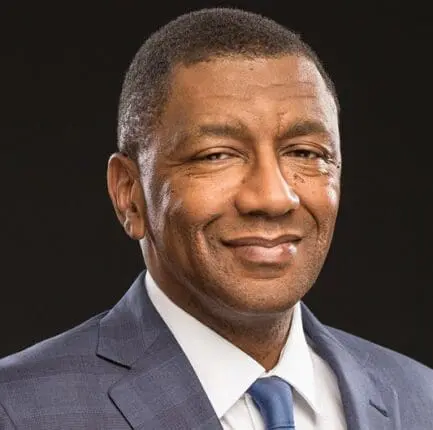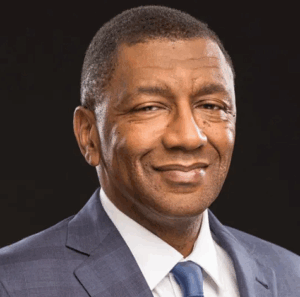As a nation, we prefer to address racial tensions from a distance: via sensationalized media coverage, academic analysis, and lofty social policy debates. But face-to-face encounters around issues of race remain so uncomfortable and downright scary that most people—even those who consider themselves tuned into the subtle and systematic racism of our society—go out of their way to avoid them. Our usually unstated assumption is they’ll lead to steely silences, angry confrontations, even violence.
Psychologist Howard Stevenson, a researcher at the University of Pennsylvania who trained as a family therapist, has devoted himself to studying the moments when racial tensions reach their peak. He runs the university’s Racial Empowerment Collaborative, and promotes racial literacy, a set of learned skills designed to help people more effectively read and resolve racially stressful encounters. His work is focused on moving beyond dangerous knee-jerk reactions around race, and helping people experience what he calls “racial health.”
With a popular TED talk and his book, Promoting Racial Literacy in Schools, he’s at the forefront of the urgently important movement to find better ways to face the troubling realities of racism in our culture.
RH: What led you to focus on racial literacy in your research?
STEVENSON: I grew up in a family that was openly expressive about racial issues. It was only when I got to the university that I discovered that the rest of society, even in academia, didn’t know how to talk about race. I encountered the tension many people of color experience between where they come from and where they’re going. In deciding to fit in and move forward, I found many really distanced themselves from their culture, and I developed a deeper understanding of how that often leads to a profound sense of self-alienation. Of course, I also saw what happens when embracing your culture becomes such a preoccupation that it can narrow your outlook on life.
In talking to my academic friends from different racial backgrounds, I realized that we all felt alienated in various ways. I’d ask them, “What will you do about it?” And they’d challenge me back, asking, “What will you do about it?” Eventually, I decided that I was going to devote myself to using my academic resources to look deeply at what was missing in how we approach race in this society.
RH: You’ve talked about how our brains can distort threats when race comes into play. Why does our brain read racial difference as a problem?
STEVENSON: We’ve all been taught lessons about race from early on, and one of those lessons is it’s dangerous to talk about it. We have a history in this country that goes back to slavery and the institutionalized violence toward people who are racially different. Our shared knowledge of this history means that anytime anybody approaches issues of race, they’re somehow, directly or indirectly, triggering the possibility of that violence. Even if you didn’t know much about race in the US, you’d pick up on the social atmosphere around it. In fact, people from other countries come up to me all the time and tell me they sense an underlying attitude of fear in relationship to race and racial differences that they haven’t experienced in their native culture.
RH: Would you say that we’re experiencing a greater awareness of racial issues now?
STEVENSON: Yes, but I think we need to remember that critical attention to race is cyclical. My brother Bryan runs the Equal Justice Initiative in Montgomery, Alabama, and has just opened a lynching museum. As a lawyer, he does a lot of work around the death penalty. His point has always been that slavery never died; it just evolved. Remnants of it include mass incarceration, the lack of economic opportunity for minorities, and the impact of segregation in education and housing. In a way, social media are helping people see this clearly, but if you take a larger historical look, you’ll notice that we go in cycles of making these injustices more or less visible.
Slavery has evolved into systems that separate people by race. Segregation is very much alive in our society today. That’s why we need to change how we go about attempting interventions that address racial divisions. We mistakenly thought that once we crossed certain barriers—education and housing come to mind—that we’d never have to cross them again. But we’ve since learned we need to keep coming up with better strategies to address these same entrenched issues.
RH: Describe the method you and your team developed to help individuals remain calm in the midst of a racial conflict or discussion.
STEVENSON: There’s emotional trauma that affects people of color every day that legal remedies don’t address and that undermines social progress and learning. Our model focuses on asking people to confront the question, “How well can I navigate a racially stressful encounter with somebody I don’t know, or even somebody I do know?” And we think the issue of racial threat is best understood by zooming in on those charged moments of interaction before pursuing some idealistic dream of broad social change.
We’re not just teaching people strategies for calming down, but for noticing what’s going on emotionally within. We think that’s healthier than reacting and not knowing why you’re reacting. Both underreacting and overreacting have consequences, and neither leads to good decisions in the moment. We’re helping them get clearer about whatever the racially charged situation is really about and becoming aware of how they want to react, whether it’s to be calm or to be loud, and what the consequences of however they choose to react may be.
In our work, we use examples of worst-case scenario police encounters and teacher–student conflicts, but we talk about any racial encounter that people experience, including ordinary conversations with a colleague at work who’s racially different from you. Because if that conversation feels stressful enough to rate it as a 10 on a scale of one to 10, you’ll need to learn ways of helping your brain and body cope with that. If you’re in that situation, it usually means you’re overwhelmed, can’t access decision-making skills, and are worried about your own safety. So the only options you have are either give up or protect yourself: fight, flight, or fright.
RH: How common is the panicking?
STEVENSON: Not everybody sees a racial encounter as a threat. Individuals define whether it’s threatening based on their past experiences. So a racial encounter could be anything from a conversation, to simply being around a racially different person, to hearing something racially inappropriate or humiliating, or fearing saying something inappropriate, to facing off with a teacher or boss. Unfortunately, few people have practiced managing their emotions to respond to these encounters in healthy ways. Someone just walking past a black or brown person on the street can experience fear, threat, or calm, depending on their racial literacy.
The question is: do you know how you react to a racial encounter? Some people respond to police encounters with relative calm; others get very upset. It’s a bit like facing a poisonous snake. Some might be completely overwhelmed, while others might rate it as a stressful six, meaning, “It’s difficult, but I can manage it.”
RH: What age group do you focus on in your work?
STEVENSON: We’ve been doing it with students as young as fifth grade—anyone who can learn mindfulness skills. An example I often use is of a Native American fifth-grade girl in a Chicago school who was able to be very clear about how her anger at being the only Native American in her class is at a level nine. Physically, she feels it like butterflies in her stomach that fight with each other. They fly up into her throat and choke her.
RH: She’s physically aware before she has words for her feelings?
STEVENSON: I think children may be more aware of physical feelings than adults are. Adults have enough knowledge to think that talking about race is dangerous, but they’ve lost some of their other awareness around race because they’re squelching it. They’re acting or not acting out of fear of making the wrong decision or being humiliated or appearing as if they don’t know the right answer. That makes them less able to know what’s going on emotionally within.
RH: It sounds like your approach is very body-focused.
STEVENSON: We focus on the body and the memory. When I lecture, I say, “For two minutes, remember what life was like when you were growing up. What messages did you hear about race? Any interactions or examples? Now tell the person next to you about your story for two minutes and then listen to theirs.” And in those four minutes, I often see physical reactions along with the memories. People will say, “It’s almost like I was back there in my childhood, even though it happened 30 years ago.”
RH: Can most people do this in two minutes?
STEVENSON: Some people can’t, or they won’t feel it in a significant way, but others will say, “I was at a level nine in my anger or fear then, and I feel it at a nine just thinking about it now and telling the person next to me.” So it’s physical, it’s productive, and I think two minutes is long enough for people to get there.
Once you notice what’s going on during those racial moments, you’ll be better at making conscious decisions going forward in regard to issues of race. Knowing why you react the way you do and then admitting it to yourself is a courageous act in a world that doesn’t talk about race. It challenges the blindness and the denial that most of us feel.
RH: So a big part of your aim here is raising self-awareness?
STEVENSON: We’re raising self-awareness of who you are when it comes to interacting with people of color or what gets triggered in you as a person of color in a racial situation. Do you notice when a racial moment shows up? Was it something that someone just said? Was it something on television? Did you overhear somebody else talking? How did you experience it? It may not be stressful. It could be joyful.
Learning how to read racial encounters is just a part of racial literacy. Some people will always feel blamed or ashamed. They could be in a racial encounter and never define it as racial. But racial literacy includes the ability to read my own emotions. Do I appraise them accurately in these moments? Many of us aren’t really good at reading ourselves. I could be stressed, and I might define my experience as a level two, when really my leg is twitching, and my lip is quivering, and other people can see that, and it’s really an eight.
RH: What then?
STEVENSON: Then you learn to use tools like mindfulness, yoga, prayer, or other means to loosen the tension within you to make better decisions. You recognize the choices you might make about resolving the moment. This includes asking, “How do I respond to the situation without underreacting or overreacting? How do I walk away feeling like I made a just decision that was congruent with my beliefs?” We find that if that resolution choice is still haunting you months later—if you’re thinking, I’m still angry that I didn’t speak up, or Man, I went overboard there—then you may not yet be holding to your own set of values about how to think or act. The goal is to assess your behaviors and get to where you feel right about how you handled things.
RH: You’ve worked on some fascinating projects that use these strategies, not only in schools and workplaces, but on basketball courts and in barbershops.
STEVENSON: We’re using the cultural affirmation that already exists in the barbershops and teaching racial literacy skills to the barbers, who themselves can be very good at teaching while they’re cutting hair. This helps the men in their chairs disclose personal stuff, as well as expand their skill sets. And playgrounds and basketball courts, with kids trash-talking or dealing with people on their own team, can be a great stage for kids to practice different approaches to dealing with confrontation.
RH: What kind of takeaway can you offer the everyday therapist?
STEVENSON: I’m trained as a family therapist, so I think of people dancing around racial dynamics in the same way families dance around conflict. If you notice yourself dancing around racial moments, you can learn to choreograph yourself differently. You can learn to notice how you don’t speak up during moments of tension and how to handle those moments differently. Recognizing my own reactions to racial moments can be scary, but it opens up the possibility of new chances and do-overs. There can always be different outcomes. It’s a therapeutic process.
Want to earn CE hours for reading this? Take the Networker CE Quiz.
Howard Stevenson
Howard Stevenson, PhD, is a researcher trained as a family therapist who has devoted himself to studying the moments when racial tensions reach their peak. He’s the director of the Resilience Empowerment Collaborative, and promotes racial literacy, a set of learned skills designed to help people more effectively read and resolve racially stressful encounters. His work is focused on moving beyond dangerous knee-jerk reactions around race and helping people experience “racial health.”
Ryan Howes
Ryan Howes, Ph.D., ABPP is a Pasadena, California-based psychologist, musician, and author of the “Mental Health Journal for Men.” Learn more at ryanhowes.net.














